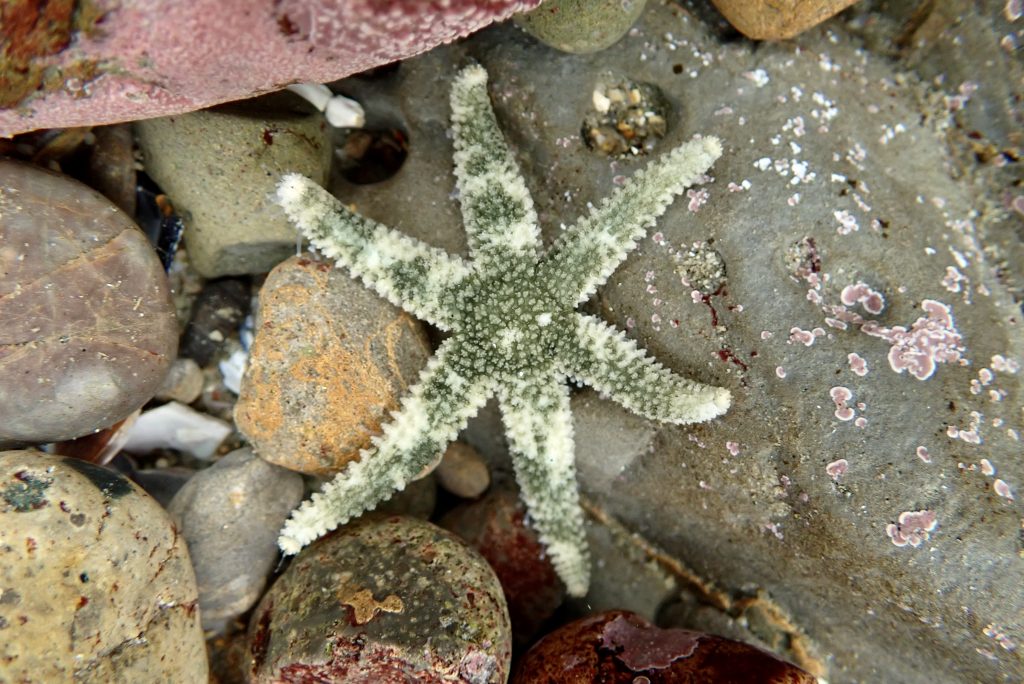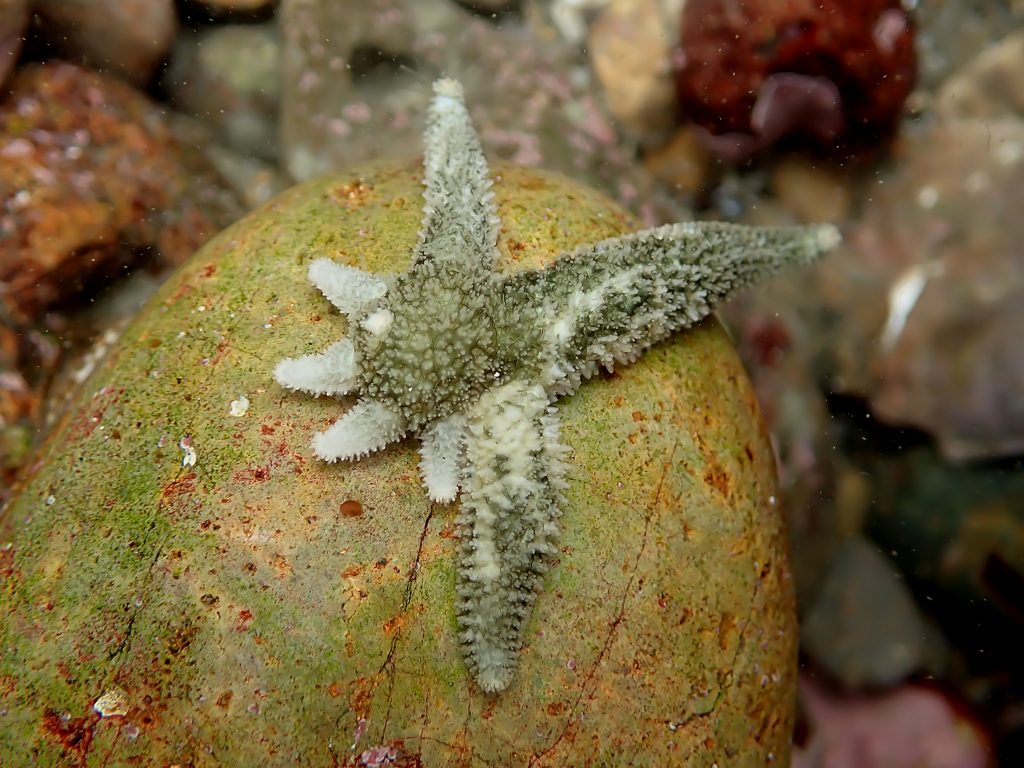This morning I went to Pigeon Point to poke around and do some collecting. It’s a favorite site of mine, as it’s exposed and dynamic, with the diversity you’d expect. Of the sea stars, the most common by far are the six-armed stars in the genus Leptasterias. They are small (less than 8 cm in diameter, often smaller than 1 cm), somewhat drably colored, and sometimes on the underside of rocks, all of which means that they are not always conspicuous. But once you get the right search image, you see them everywhere.
Six arms, see?


2021-04-03
© Allison J. Gong
Sea stars are well known for their ability to regenerate lost arms. It is not uncommon to see a star that looks healthy in every way except that one of its arms is shorter than the others. This must happen in Leptasterias, too. Searching through my library of pictures of Leptasterias, I did find a couple of examples of regeneration.


2019-06-19
© Allison J. Gong
When these stars finish regrowing those arms, they will have the typical number of arms for the genus, which is six.
Today I saw something that I’d never seen before. It was a Leptasterias that was regenerating arms. Only this was weird. It had three full-size arms and was growing four!

2021-04-03
© Allison J. Gong
When (if) this star survives, it will eventually have seven arms. And that’s strange. I asked my friend Chris Mah, who is the sea star systematist at the Smithsonian, if it was common for Leptasterias to do this. He said he’d never seen it, either. So it is indeed a rare phenomenon.
Now, there are stars in the genus Linckia that actually reproduce by deliberately leaving behind an arm, which then goes on to regenerate the rest of the body. While they do so they look like comets:

Ahmed Abdul Rahman and Frédéric Ducarme for MDC Seamarc Maldives (CC BY-SA 4.0)
My regenerating Leptasterias isn’t quite a comet, but it is doing something equally strange and wonderful. I really wished I could bring it to the lab and keep an eye on it over the next several months. However, Leptasterias are on the no-take list, I think because their populations are so patchy. It is extremely unlikely that I will ever see that same individual again, so we will never know what happens to it. Unless, of course, I happen to come across a 7-armed Leptasterias at Pigeon Point sometime in the future. If you see it, take a photo and let me know!
